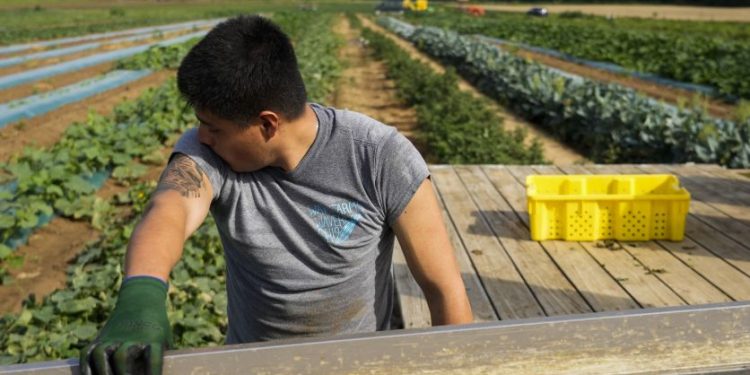New Regulations Aim to Protect Agricultural Workers from Heat-Related Illnesses
The Occupational Safety and Health Administration (OSHA) has proposed a new heat standard designed to protect agricultural workers from heat-related illnesses. According to OSHA, the cost of implementing these new regulations will be less than 1% of annual revenue for most agricultural operations, making them affordable for farmers.
Michael Marsh, President of the National Council of Agricultural Employers (NCAE), stated that many farmers are already following practices similar to those proposed in the new rule, such as providing water, shade, and rest breaks during high temperatures. Marsh noted that the NCAE has conducted webinars on heat safety and plans to hold another once the proposed rule is published in the Federal Register.
The proposal mandates that employers develop heat illness and injury prevention plans, with specific actions required at two temperature triggers: 80 degrees and 90 degrees Fahrenheit. These actions include ensuring access to clean, cool water, scheduled rest breaks, and acclimatization plans for workers.
OSHA’s economic analysis estimates the cost of compliance for various types of farming operations based on the North American Industry Classification System (NAICS). For example, the costs for oilseed and grain farming are estimated at $1,172 (0.11% of annual revenue), while vegetable and melon farming could incur costs of $5,242 (0.37% of revenue). In most cases, the costs are expected to be less than 1% of revenue, even when considering current practices that address heat hazards and potential productivity gains outside of rest breaks.
Exceptions include sheep and goat farming and other animal production, where costs are expected to exceed 1% of revenues. However, OSHA attributes these higher estimates to data limitations rather than the economic feasibility of the proposed rule. Additionally, a longstanding appropriations rider prohibits OSHA from enforcing standards on small farms with 10 or fewer employees, further reducing the impact on these small-scale operations.
The push for these new standards comes amid increasing concern over the effects of climate change, with 2024 projected to be one of the hottest years on record. President Joe Biden highlighted the importance of the new regulations, citing OSHA’s estimate that 479 workers died from environmental heat exposure from 2011 to 2022. This figure surpasses the number of deaths from all other weather-related disasters combined during the same period.
The United Farm Workers (UFW) and the UFW Foundation praised the proposal, noting that it follows existing heat safety standards in California, Oregon, and Washington, which were implemented after heat-related deaths of farm workers. UFW President Teresa Romero emphasized the significance of the federal government’s commitment to ensuring all workers have the right to shade, water, and rest during extreme heat conditions.
The proposal is now open for a 120-day comment period, allowing stakeholders to provide feedback before the rule is finalized.
Error




